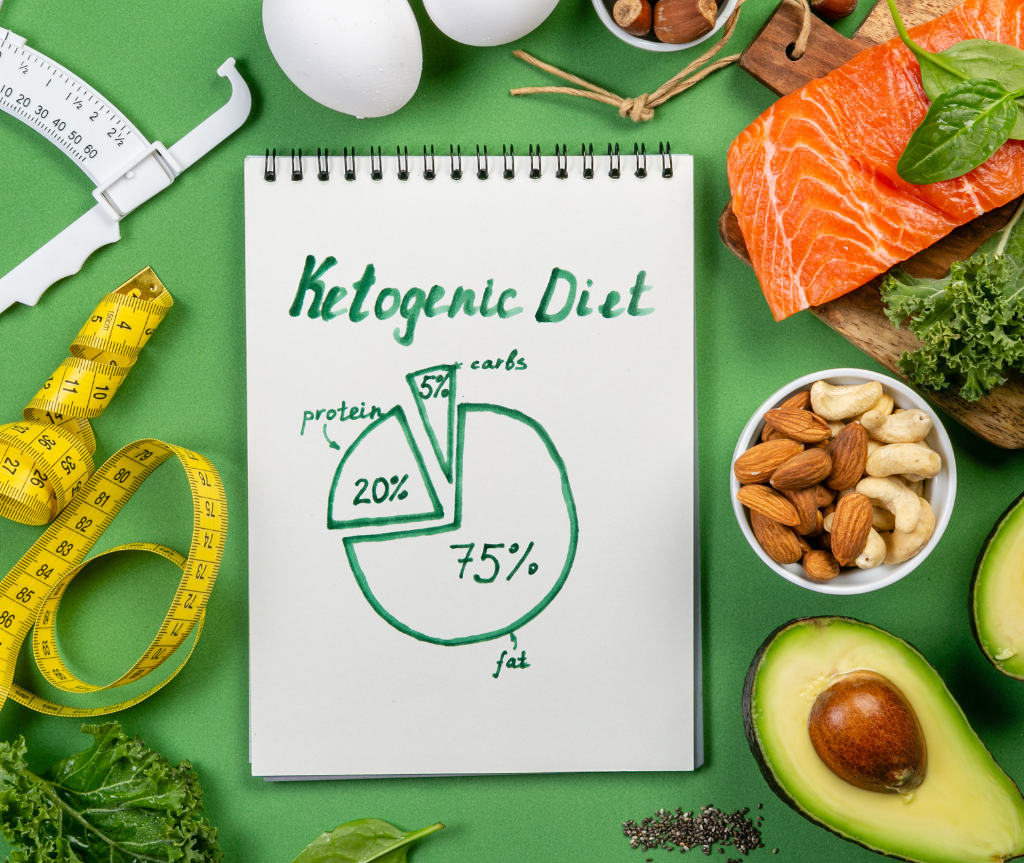Maybe you’ve heard a friend rave about keto. Maybe you’ve seen before-and-after photos online. Or maybe you’ve wondered why everyone seems to be talking about cutting carbs — and what the different types of keto diets actually mean for real life. Whatever brought you here, you’re in good company; curiosity is often the first step toward meaningful change.
And here’s the surprising part: keto isn’t one single diet. It’s more like a family of approaches, each shaped for different personalities, routines, and goals. Once you understand the options, choosing the right fit becomes much easier — and much kinder to your everyday life.
Let’s explore the five most common versions, so you can find the one that feels like you.
1. Standard Ketogenic Diet (SKD)
Think of the Standard Keto Diet as the “classic” model — the one people usually imagine when they hear the word “keto.” It has a clear structure: high fat, moderate protein, very low carbs. For many beginners, this structure feels grounding. It gives them a starting point, a rhythm, a map.
When your body switches from burning glucose to producing ketones, something shifts. People often describe it as steadier energy or a quieter appetite. Research also suggests it can help with fat loss and support blood sugar balance in people living with type 2 diabetes.
Of course, structure has its limits. SKD can be too restrictive if you’re pregnant, dealing with kidney concerns, or prefer a more flexible way of eating. In that case, one of the other styles below may feel gentler.
If you do choose SKD, lean into natural fats — think avocados, olive oil, nuts, seeds, and oily fish. They tend to make the journey smoother.
2. Targeted Ketogenic Diet (TKD)
Imagine you’re halfway through a workout, and your energy suddenly dips. If you’re someone who trains hard, you’ve probably felt this. TKD is designed with you in mind.
This approach allows a small amount of fast-acting carbs right before or after exercise — just enough to fire up your muscles without pulling you out of ketosis the rest of the day. Many people say it helps them feel stronger, faster, and a little more capable during high-intensity sessions.
Still, TKD isn’t a “free pass” for carbs. If you’re managing insulin resistance or taking blood sugar medication, you’ll want to go slowly and pay attention to how your body responds.
A small piece of fruit or a handful of white rice 30–60 minutes before training is often all you need.
3. Cyclical Ketogenic Diet (CKD)
If you love the idea of keto but crave a little breathing space, CKD might feel like home. It follows a simple rhythm: keto for 5–6 days, higher carbs for 1–2 days.
Many people tell us those higher-carb days feel like a reset — not just physically, but mentally. Athletes, in particular, use CKD to refill their glycogen stores and reduce fatigue from long training weeks. Some research suggests this style can enhance performance and make recovery feel less like a struggle.
On your higher-carb days, choose nutrient-rich options like sweet potatoes, legumes, oats, or whole grains. Think of it as intentional fuel, not a free-for-all.
4. High-Protein Ketogenic Diet
Protein can be incredibly comforting. It keeps you full, makes meals satisfying, and supports muscle health — especially as you age. This variation increases protein to about 30% of your daily intake, making it a favourite for people focused on strength, muscle preservation, or simply staying satiated throughout the day.
Paired with healthy fats, lean proteins like chicken, fish, tofu, eggs, and turkey can make this version feel stabilising and steady.
If you have kidney issues, though, higher protein may not be the best route. A quick chat with a clinician can help you choose safely.
5. Lazy Keto
Maybe you’ve tried tracking macros before and felt your shoulders tense up the moment you opened the app. If that sounds familiar, lazy keto might be the gentle introduction you need.
Here, you only track one thing: carbs. No calculators. No spreadsheets. No perfect ratios. Just trying to stay under about 20 g of carbs per day.
Despite its simplicity, many people still experience appetite control and gradual weight loss — mainly when they focus on whole foods rather than heavily processed “keto” snacks.
A good rule of thumb? Build your meals around vegetables, whole proteins, nuts, seeds, and natural fats. Your body will thank you.
Key Takeaways
There’s no universal keto plan — and that’s the beauty of it. You can choose the path that matches your lifestyle, goals, and energy levels.
- The Standard Keto Diet offers structure and science-backed benefits.
- Targeted Keto and Cyclical Keto work beautifully for active, athletic lifestyles.
- High-Protein Keto supports muscle strength and satiety.
Lazy Keto gives beginners an easy, flexible starting point.
Whichever version you lean towards, choose the one that feels sustainable — something you can live with, not just push through. And if you’re managing a medical condition, a quick conversation with your healthcare provider can help ensure the safest, smoothest experience.



